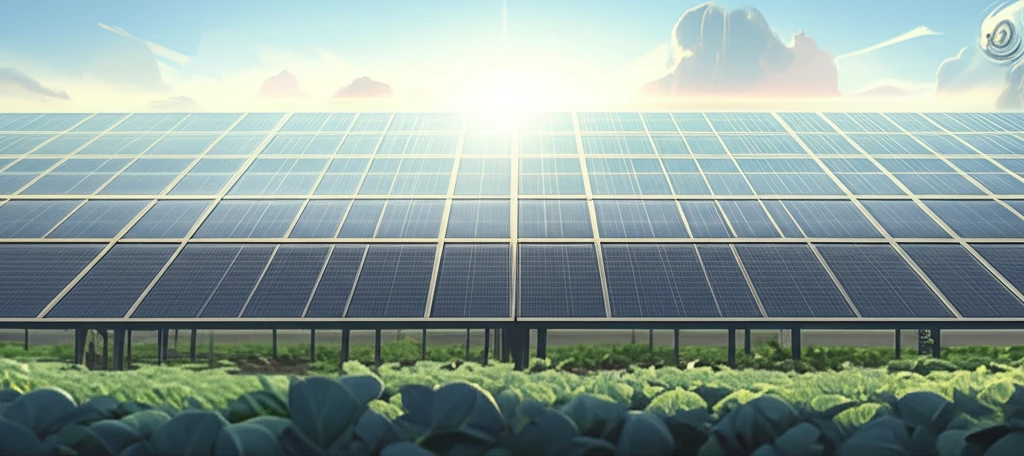
Agrivoltaics: Can Solar Panels and Farming Coexist for a Sustainable Future?
"Explore how integrating solar technology with agriculture can optimize land use, reduce environmental impact, and revolutionize sustainable farming."
As the world grapples with climate change and a growing population, innovative solutions are needed to balance food production and renewable energy. One promising approach is agrivoltaics, the co-location of solar photovoltaic (PV) modules and agriculture. This system not only generates clean energy but also optimizes land use, offering a sustainable path forward.
Traditional farming practices, intensified by the need to feed a growing population, contribute significantly to carbon emissions through machinery, fertilizers, and transportation. Simultaneously, the demand for land for solar farms often competes with agricultural needs. Agrivoltaics addresses both challenges by allowing farming and energy production to occur on the same plot of land.
The integration of solar panels into agricultural settings introduces additional functions such as sunlight sharing, land sharing, and power generation. However, traditional methods of assessing agricultural systems may not fully capture the benefits of agrivoltaics. New assessment metrics are needed to quantify the environmental and economic impacts accurately. This article explores the potential of agrivoltaics and how its success is measured.
What is Agrivoltaics and Why Does It Matter?

Agrivoltaics involves installing solar panels in agricultural fields, either ground-mounted between rows of crops or elevated above the crops. This approach allows for the simultaneous production of solar energy and agricultural products. The key is to design the system in a way that optimizes sunlight sharing, ensuring that crops receive enough light for healthy growth while maximizing energy generation.
- Optimized Land Use: Agrivoltaics makes the most of available land by combining two essential functions—food and energy production—on a single site.
- Reduced Environmental Impact: By generating clean energy on-site, agrivoltaics reduces reliance on fossil fuels and lowers carbon emissions associated with traditional farming practices.
- Climate Change Mitigation: Agrivoltaic systems contribute to climate change mitigation efforts by decreasing greenhouse gas emissions and promoting sustainable agriculture.
- Additional Income for Farmers: Farmers can generate additional revenue by selling the electricity produced by the solar panels, diversifying their income streams and enhancing economic stability.
Looking Ahead: The Future of Agrivoltaics
Agrivoltaics represents a promising pathway toward a more sustainable and resilient future. By optimizing land use, reducing environmental impacts, and providing additional income for farmers, agrivoltaic systems offer a holistic solution to the challenges of food and energy production. Continued research and development in this field will unlock even greater potential, transforming the landscape of sustainable agriculture and renewable energy. Embracing agrivoltaics is a step toward a greener, more secure, and sustainable world.
